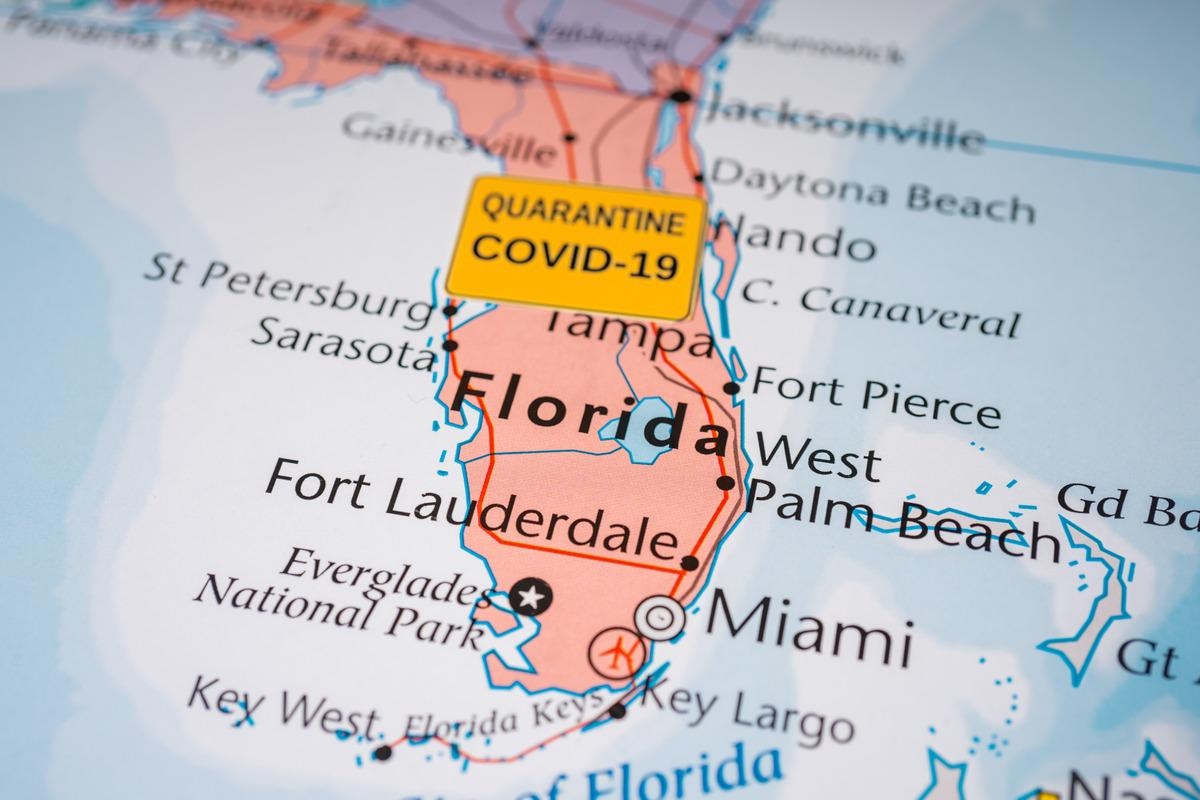In a study conducted at the University of Florida, USA, scientists have predicted the number of infections and deaths caused by the omicron variant of severe acute respiratory syndrome coronavirus 2 (SARS-CoV-2) in Florida.
The findings indicate that despite a significantly higher infection rate, the omicron infection may cause only 30% of total deaths caused by the previously dominant delta variant.
 Study: Updated projections for COVID-19 omicron wave in Florida. Image Credit: Alexander Lukatskiy/Shutterstock
Study: Updated projections for COVID-19 omicron wave in Florida. Image Credit: Alexander Lukatskiy/Shutterstock
The study is currently available on the medRxiv* preprint server, whilst the article undergoes peer review

 *Important notice: medRxiv publishes preliminary scientific reports that are not peer-reviewed and, therefore, should not be regarded as conclusive, guide clinical practice/health-related behavior, or treated as established information.
*Important notice: medRxiv publishes preliminary scientific reports that are not peer-reviewed and, therefore, should not be regarded as conclusive, guide clinical practice/health-related behavior, or treated as established information.
Background
The omicron variant of SARS-CoV-2 was first detected in South Africa in November 2021. Soon after emergence, the variant has caused a rapid surge in new cases both inside and outside the originating country. Currently, the omicron variant has been detected in more than 80 countries across the globe.
Compared to other identified variants of concern (VOCs), the omicron is heavily mutated, with around 25 mutations in the spike protein. Given the mutational landscape, it has been estimated that the variant might significantly escape antibody-mediated neutralization and cause vaccine breakthrough infections.
In Florida, the first case of omicron infection was identified on December 7, 2021. By mid-December, the state has experienced a major surge in new omicron cases. In the current study, the scientists have performed detailed simulations to predict the number of omicron cases and related mortality in Florida.
Study design
The scientists used a data-driven, stochastic, discrete-time, agent-based simulation model that accurately represents the people and places of Florida. They considered basic reproduction numbers of omicron and delta variants to calculate the transmission advantage of omicron.
The scientists considered the impact of both non-pharmaceutical control measures (social distancing, movement restrictions, and workplace/school closure) and vaccinations on the rate of transmission. They considered that every exposure has some risk of developing infection even in individuals with preexisting immunity from infection or vaccination. Specifically, they assumed that the efficacy of preexisting immunity against infection may reduce due to changes in circulating viral variants. However, the efficacy against severe disease would remain constant with time.
The scientists considered the initial level of infection- or vaccination-induced immunity as well as the immune escape ability of variants to calculate the current level of protection among individuals. Assuming that the delta variant has 15% immune escape ability, the immune escape probability of the omicron variant was estimated to be 60%.
Important observations
The predictions made by the current model revealed that the number of omicron infections is 2-fold higher than that of delta infections in late summer 2021. Considering the limitations in testing capacity and sensitivity and probability of milder infections among vaccine recipients, the model predicted that a considerable fraction of omicron infections may remain undetected. Overall, these findings indicate that the omicron variant is capable of infecting most of the Florida’s population during the current wave. The number of reported omicron cases was predicted to peak in the first half of January 2022.
Regarding mortality, the model predicted that the number of deaths caused by the omicron variant would be only 33% of total deaths caused by the delta variant. This finding indicates that despite having a high infection rate, the omicron variant may cause less severe infections than the delta variant.
Study significance
The study findings predict that the mortality rate in Florida during the omicron wave will be significantly lower than that observed during the delta wave. Since a booster vaccination against SARS-CoV-2 is expected to reduce the risk of omicron infections, the scientists suggest a rapid implementation of booster vaccination among eligible individuals.
Children under the age of 5 years are particularly susceptible to omicron infection as they are not eligible for vaccination. Given this observation, the scientists recommend that young children should particularly be protected from possible omicron exposures.

 *Important notice: medRxiv publishes preliminary scientific reports that are not peer-reviewed and, therefore, should not be regarded as conclusive, guide clinical practice/health-related behavior, or treated as established information.
*Important notice: medRxiv publishes preliminary scientific reports that are not peer-reviewed and, therefore, should not be regarded as conclusive, guide clinical practice/health-related behavior, or treated as established information.